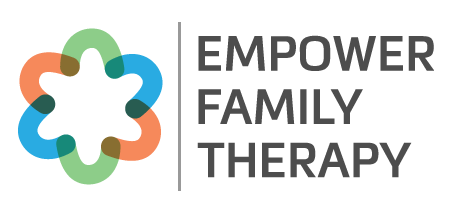5 Meaningful Ways Therapy Helps Empower Your Family to Communicate Better
Family communication doesn’t need to be perfect. But it does need to feel safe.
When communication breaks down, it often happens slowly. A sharp tone here. A pattern of avoidance there. Over time, certain topics become off-limits. People start walking on eggshells. And even in a close family, disconnection takes root.
Therapy offers something different—not a fix, but a new way forward. One that helps your family speak more honestly, listen more openly, and respond with more care.
Here are five ways therapy helps empower your family to communicate with intention and trust.
1. Making Space for Everyone’s Voice
In many families, one or two voices tend to dominate. Others shrink back—out of habit, fear, or simply exhaustion.
In therapy, every person is invited into the conversation. Not just to talk, but to be heard. And not just to be heard, but to be understood.
When each person feels they have space to show up fully, the dynamic starts to shift. Communication becomes less about defense, and more about connection.
2. Learning to Name What’s Actually Happening
Most recurring arguments aren’t about the issue on the surface. They’re about the need underneath.
Unspoken pressure. Fear of being dismissed. Feeling unseen or overwhelmed.
Therapy supports families in identifying these patterns and building a shared emotional language. Instead of arguing about logistics, you start having real conversations about what matters: boundaries, needs, expectations, and care.
This is what helps empower a family—not just to avoid conflict, but to navigate it with clarity and respect.
3. Building Accountability Without Blame
When communication feels tense, it’s easy to fall into roles: the one who always gets angry, the one who tries to fix everything, the one who stays quiet to avoid making it worse.
In therapy, those roles are explored without shame. We look at how each person contributes to the dynamic—not to assign blame, but to create space for change.
Families learn how to take responsibility for their own words, tone, and timing. That kind of accountability builds trust. It also creates space for repair.
4. Practicing Repair in the Moment
One of the most powerful shifts in family therapy is learning how to pause, notice what’s happening, and respond differently.
Instead of defaulting to silence or escalation, families learn how to repair in real time. That might mean circling back after a tough moment or finding new language when something lands poorly.
These moments of repair—small but intentional—are where connection is rebuilt.
5. Creating a Culture of Emotional Safety
Empowered communication doesn’t come from rules or scripts. It comes from safety.
Families thrive when they know they can be honest without being punished for it. When it’s okay to name an emotion, set a limit, or ask for a break.
Therapy helps families build this kind of culture over time. One where it’s safe to speak the truth, revisit hard conversations, and return to one another with care.
Empowering Your Family Is Ongoing Work
There’s no arrival point. No perfect version of family communication. But there is progress. There is choice. And there are better tools than the ones most of us were handed.
Therapy doesn’t ask your family to become something you’re not. It helps you recognize what’s already working, name what’s getting in the way, and choose more intentional ways to show up for each other. It’s not about fixing—it’s about learning how to live, speak, and relate with more care, even when things are messy.
Reach Out
If your family could use support navigating conflict, building connection, or shifting old patterns, we’re here to help.
Contact us to learn how family therapy can support your next step forward.
